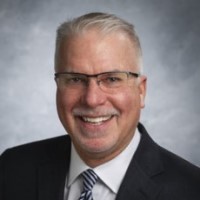
Getty Images/iStockphoto
How Top Accountable Care Organizations Save Year After Year
Accountable care organizations continually save on post-acute care and hospitalizations. But how the providers do that has evolved over the years, while new strategies have emerged.
Accountable care organizations had a record year, according to the latest performance data for the Medicare Shared Savings Program.
CMS recently announced that organizations participating in the program – which are otherwise known as ACOs – saved Medicare nearly $1.2 billion in 2019 while maintaining a high level of care quality as measured by longstanding program metrics.
It was the largest annual savings for the program to date, CMS Administrator Seema Verma highlighted in the announcement. Additionally, it was the third consecutive year for net program savings.
Program savings in previous years have not been as impressive, according to CMS data. In 2018, for example, ACOs in the program only saved Medicare about $739 million after CMS paid out shared savings. The year before, ACOs saved Medicare just $314 million.
What did ACOs do differently in 2019 to save significantly more? On paper, not a whole lot.
“Consistent with prior years, ACOs with shared savings continued to reduce post-acute care spending, along with hospitalizations and emergency department visits,” Verma stated.
Research has long shown that ACOs in the program have saved money by spending less on expensive inpatient and post-acute care, such as skilled nursing facilities and home health, and more on services done in the physician’s office.
But ACOs are not one (or a couple) trick ponies. According to some of the largest ACO organizers, strategies that have led to successful savings have evolved since ACOs joined the program years ago, and new ones are emerging to not only add to savings but improve quality of life for patients.
Who saved the most in 2019?
ACOs in the Medicare Shared Savings Program may have had a record year, but some types of organizations saved more than others in 2019. According to CMS data:
• ACOs under Pathways to Success performed better than legacy track ACOs, showing net per-beneficiary savings of $169 per beneficiary compared to $106 per beneficiary for legacy track ACOs.
• ACOs (both in legacy tracks and those under Pathways to Success) that took on downside financial risk continued to outperform ACOs in upside-only tracks, with net per beneficiary savings of $152 per beneficiary compared to $107 per beneficiary.
•“Low-revenue” ACOs, typically led by physicians who mostly provide outpatient services, generally saved more than “high-revenue” ACOs, which are typically led by hospitals that tend to provide both inpatient and outpatient services. Low-revenue ACOs had net per-beneficiary savings of $201 per beneficiary compared to $80 per beneficiary for high-revenue ACOs.
• Urban ACOs generated $125 net per-beneficiary savings and rural ACOs generated $64 net per-beneficiary savings.
Scaling successful ACO strategies
When Gary Stuck, DO, FAAFP, spoke with RevCycleIntellingence last year, the chief medical officer at Advocate Aurora Health attributed the health system’s combined $61 million in ACO savings to reductions in post-acute care spending and hospitalizations and readmissions.
Even before the 2019 interview, Stuck’s predecessor, Lee Sacks, MD, touted the post-acute care network at what was then just Advocate Health Care.
ACOs affiliated with Advocate Aurora Health still rely on the optimization of post-acute care utilization and a strong primary and preventative care focus, Stuck recently stated. And these strategies have paid off – the health system’s three ACOs generated $85.7 million in savings in 2019, the most savings of any health system in the Shared Savings Program.
But it wasn’t necessarily the same post-acute care network or primary care improvements this time around.

“Since we talked, one of the biggest movements was that we did expand the post-acute network and completed the build-out in Wisconsin,” said Stuck, who oversees ACOs in Illinois as well. “Now, all of our sites have access to that type of that model.”
Additionally, Advocate Aurora Health “remodeled” the network by executing on the suggestions medical directors offered to improve efficiencies and infrastructure. And the health system isn’t done yet.
“Honestly, we could do better,” Stuck stated. “We need to keep going in that direction.”
Scaling up a strategy around annual wellness visits also helped physician-led ACOs assisted by Aledade continually achieve savings across Medicare, Medicaid, Medicare Advantage, and commercial payers.
“If we were having this conversation three or four years ago, I would tell you a true story and a relevant story about how one of our doctors in Arkansas kept hounding this patient to come in for their AWV and he finally got him to come in and to get his colonoscopy. He did the colonoscopy and they caught colon cancer early, which is awesome,” explained Travis Broome, Aledade’s SVP for policy and economics.
It is a great story about preventative care and how ACOs are improving patient lives in terms of quality and costs (colon cancer is one of the most costly cancers to treat), Broome continued. However, over time, Aledade has learned that their ACOs needed to be doing a lot more with annual wellness visits to actually achieve savings in the Shared Savings Program.

“What we found was, we weren't saving Medicare money by getting in a patient who had never had an AWV and hasn’t been to the doctor in two years,” Broome said. “We were actually saving Medicare money by having annual wellness visits for people who are going to come to the office another six times a year, not people who didn't have a primary care relationship.”
In order to save money, annual wellness visits also needed to be a designated time to “step back and look at the big picture” of a patient’s care, versus an appointment to address the “symptom of the day,” Broome added.
The refined, expanded strategy around annual wellness visits worked for Aledade. The company reported that its Medicare ACOs increased primary care services by 7.5 percent between 2018 and 2019, leading to 90,000 additional primary care visits and more than 224,000 annual wellness visits.
In turn, the ACOs reduced hospitalizations by an average of 9 percent, avoiding over 10,000 inpatient stays in 2019. Key quality metrics, including blood pressure screening, A1C control, and rates of cancer screening, also improved.
“Certain strategies have evolved, and we’re learning what the actual outcomes from certain strategies are,” Broome said.
Building up from the foundation
Reducing post-acute care utilization and hospitalizations appropriately is the basis of ACO success, whether organizations lean more on strategies around improving care coordination, primary and preventative care services, or other areas of care delivery. And scaling those strategies to create a solid foundation is key to what comes next for ACOs.
“What comes next does tend to be more local,” Broome explained.
Aledade’s ACOs in Louisiana and Mississippi, for example, have focused on reducing their high home health costs and “right-sizing” home health utilization among their patient populations. Meanwhile, ACOs in Kentucky are focusing on reducing the cost of Part B drug utilization and those in Kansas are working to improve access to those drugs.*
“Our big framework is, you have to do post-acute, you have to do hospitalizations, and then you got to figure out what the need is for your community,” Broome said.
In the case of ACOs in Kansas, improving access to Part B drugs actually increased spending at first since patients were getting the therapies they needed. However, by fulfilling that local need for more access, the ACOs are now seeing specialty care expenditures drop as patients, especially those in rural communities, are no longer seeking expensive specialist care for their conditions.
Addressing social determinants of health is another way ACOs affiliated with CommonSpirit Health are layering a local strategy to their foundation.
As CommonSpirit Health’s main ACO strategies – comprehensive annual wellness visits, transitional care management, optimal post-acute care management, and risk stratification – have matured, the health system’s 16 ACOs have increasingly focused on broadening their approaches.

“We have the right sort of fundamental approaches anchored in those four areas,” explained Nick Stine, MD, SVP of population health. “Now, it’s about iteration over time and connecting that to other programs that we care deeply about.”
CommonSpirit’s mission is rooted in addressing health inequity, social injustice, and other effects social determinants of health have on their patient populations. To fulfill its mission, the health system has created a wide range of programs to address social determinants of health, including a partnership with the ride-sharing service Lyft for patients with limited access to transportation services and, more recently, free access to consults for patients with COVID-19.
Getting these programs to touch Commonspirit’s ACOs is key to the growth – and increased performance – for the value-based organizations.
For example, with transitional care management, ACOs are now thinking “beyond the follow-up appointment and the more direct clinical aspects” of this type of care and “tying [transitional care management] to a connected community network of resources to support health-related social needs,” explained Nick Stine, MD, SVP of population health.
“Connecting with community stakeholders that are going to be well-positioned to help with employment issues, housing, and so on,” Stine continued. “Building that kind of network really addressed a broader range of particularly post-acute care needs, but really ongoing care needs for populations. That's where we're really going – trying to expand that scope over time.”
The sky’s the limit
The beauty of the Medicare Shared Savings Program and the ACO model, in general, is that providers have the flexibility to keep building on successes in order to address inefficiencies and gaps in care their patient populations are facing.
“We have greater control over what we do and how we meet our patients needs when they change and that’s not dependent on having a billing code for every time [we address] these needs,” Stine said. “That then gives us more flexibility.”
The COVID-19 pandemic has been a good use case, underscoring the benefits of the ACO model when wellness visits just aren’t possible.
ACOs under the national physician organization Privia Health leveraged expanded telehealth benefits offered by Medicare during the pandemic to stay connected with patients when they were under shelter-in-place orders. This was also in addition to the technology their ACOs already used, which included a virtual visits platform, remote patient monitoring, and digital communications tools (e.g., patient app, texting, provider messaging, online scheduling).

“Telehealth and virtual visits are now woven throughout our healthcare delivery system. This modern face-to-face doctor’s appointment – embraced by patients of all ages – must continue as a means to provide care both related, and unrelated, to global pandemics,” said Shawn Morris, Privia Health CEO.
Retaining telehealth capabilities will be easier for ACO providers since they do not rely on reimbursement from payers to maintain the technology. By sharing in savings through the alternative payment model, ACOs can add a telehealth layer to its growing number of strategies.
“We had a plan to expand our virtual visits pre-COVID,” Advocate Aurora Health’s Stuck added, “and the pandemic forced us in a big way to increase that and it's been highly successful. We're in a place now that we can do some preventative care but also monitoring of chronic conditions, which we think is, for some patients, a really great best practice.”
For Aledade, the eruption of telehealth, especially in rural communities, has also unveiled an opportunity for some ACOs to address gaps in care. For example, telehealth can be leveraged to take an overabundance of specialists in one area to address the limited number of specialists in another area.
“One of the exciting uses might be to use virtual care, online care, telehealth, or whatever to even those two things out, thereby, getting rid of those kind of inefficiencies,” Broome stated.
Under new Shared Savings Program rules known as Pathways to Success, ACOs have more flexibility to use telehealth services in ways that best fit the needs of their patient populations. Participating organizations taking on downside financial risk will also be able to implement new capabilities like beneficiary incentive programs under the revised rules.
Pathways to Success only just started, with the first cohort joining in July 2019. But the new rules are living up to its moniker.
CMS recently reported that ACOs participating in Pathways to Success saved more compared to their peers in legacy Shared Savings Program tracks – net per-beneficiary savings of $169 per beneficiary compared to $106 per beneficiary.
Even rural ACOs, which have historically had trouble generating savings, improved performance under Pathways to Success, saving nearly as much as their urban counterparts.
“[T]hese early results suggest that greater financial accountability under the Pathways to Success policies has produced the stronger incentives for ACOs to deliver better coordinated and more efficient care for Medicare beneficiaries,” Verma stated.
Pathways to Success seems to be ushering in a new era for Medicare ACOs and one that will help ACOs build on their foundations to save even more without compromising the high quality of care organizations in the program already demonstrate.
But regardless of the new capabilities ACOs plan to add to their repertoire, clinician buy-in will be key.
“In addition to time and experience, one other strategy we talked about is really building the right kind of buy-in particularly from the clinicians,” Stine said. “In the places where we have boards and engaged physicians who really identify with and see the CIN and ACO as key to their future, we see much more responsiveness and active, effective strategic iteration. Where we haven't seen that we don't have quite as much of that.”
Stuck added, “You have to have an engaged panel of physicians who partner with you, and I mean engaged, not just having them sign up. Having a stable network of primary care and specialist physicians is incredibly important, but having their engagement, creating the correct incentives for them to stay engaged and to work together is extremely important.”
*CORRECTION 09/25/2020: A previous version of this article stated Part D, instead of Part B, drugs.






